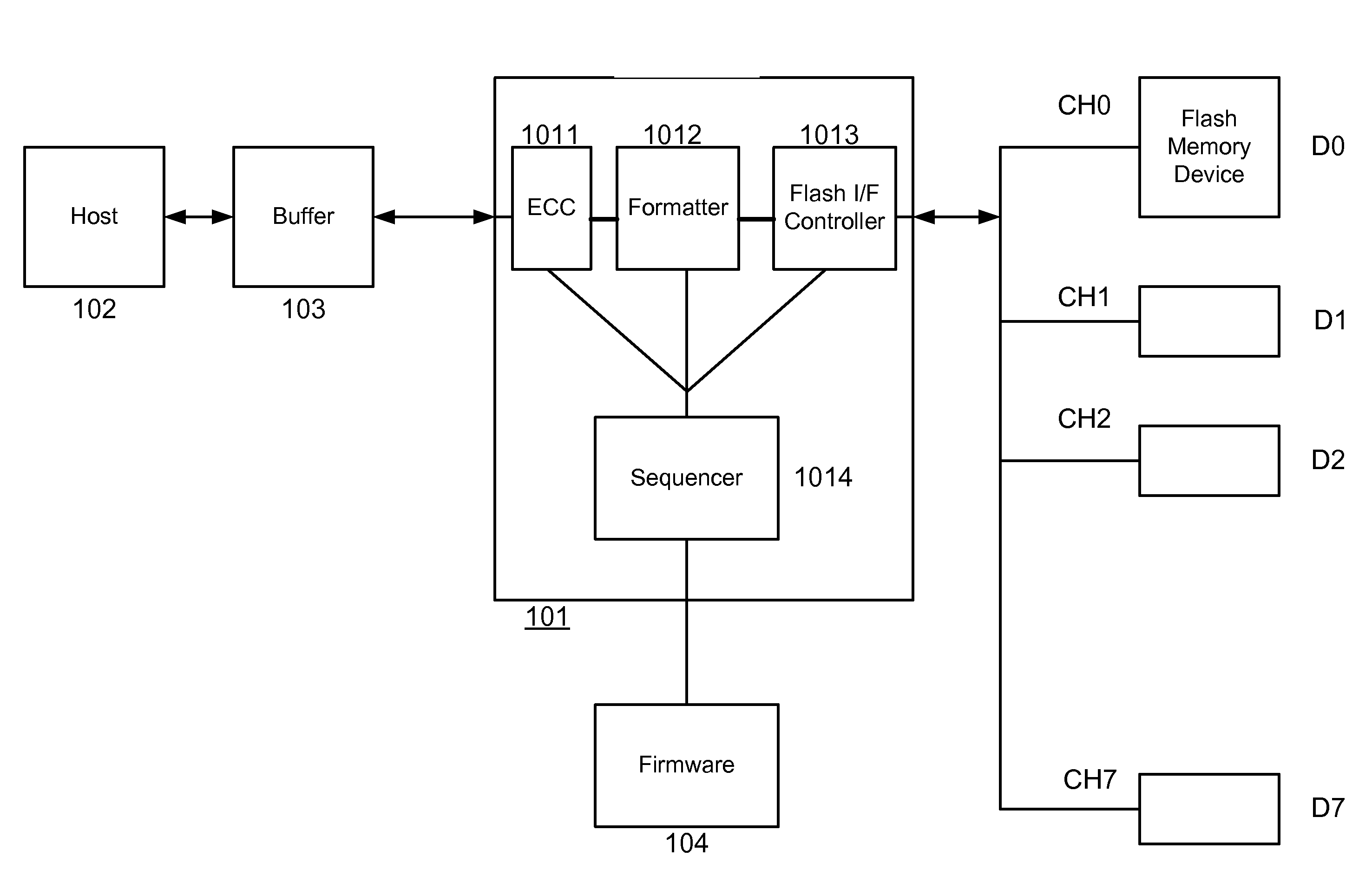Flexible sequencer design architecture for solid state memory controller
a solid-state memory controller and sequencer technology, applied in multi-programming arrangements, program control, instruments, etc., can solve the problems of large host time waste and large host time waste, and achieve the effects of reducing the waste of host time, maximizing parallelism, and effectively utilizing all available bandwidth
- Summary
- Abstract
- Description
- Claims
- Application Information
AI Technical Summary
Benefits of technology
Problems solved by technology
Method used
Image
Examples
Embodiment Construction
1. The System for Accessing Solid State Memory Devices
[0051]FIG. 2A illustrates a system for controlling access to solid state memory devices according to one embodiment of the present invention. As shown, a number of flash memory devices may be connected to each channel. In one embodiment, four such flash memory devices D00, D01, D02 and D03 are connected to the channel CH0. A flash controller 201 may have a sequencer 2014, an ECC section 2011, a formatter (FM) 2012 and a flash I / F controller (FC) 2013. The sequencer 2014 may be coupled to firmware (FW) 204 on one side, and coupled to the ECC section 2011, the formatter 2012 and the flash I / F controller 2013 on the other side.
[0052]FIG. 2B illustrates waveforms of write operations in the system shown in FIG. 2A. As shown, the host 102 may start to transfer data to an internal buffer of the flash memory device D00 at t0. From t1 to t2, while data is being moved from the internal buffer of the flash memory device D00 to the flash mem...
PUM
 Login to View More
Login to View More Abstract
Description
Claims
Application Information
 Login to View More
Login to View More - R&D
- Intellectual Property
- Life Sciences
- Materials
- Tech Scout
- Unparalleled Data Quality
- Higher Quality Content
- 60% Fewer Hallucinations
Browse by: Latest US Patents, China's latest patents, Technical Efficacy Thesaurus, Application Domain, Technology Topic, Popular Technical Reports.
© 2025 PatSnap. All rights reserved.Legal|Privacy policy|Modern Slavery Act Transparency Statement|Sitemap|About US| Contact US: help@patsnap.com



